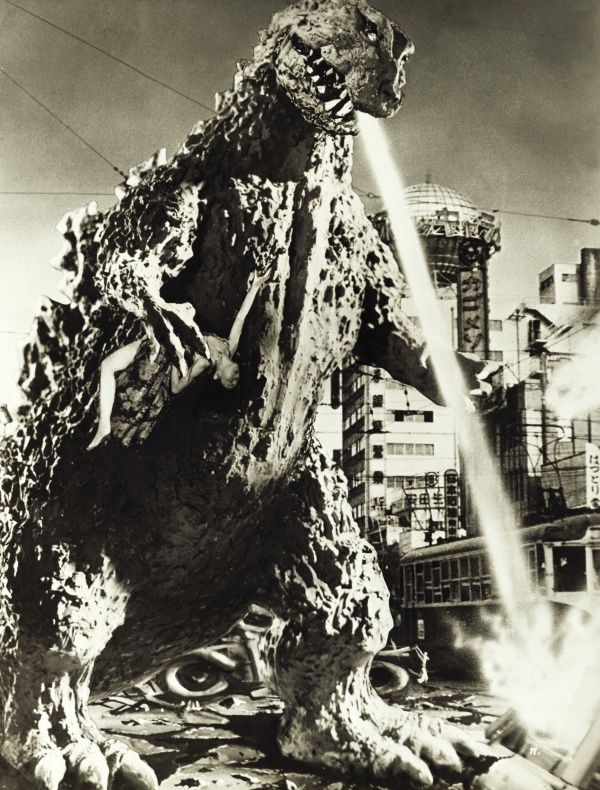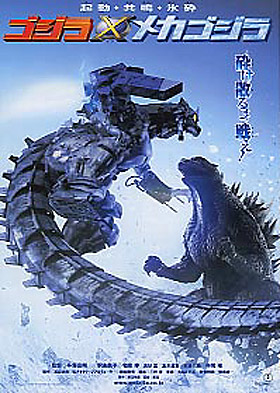
Cultural References in the film Gojira
By Kuroneko-sama
There is no limit to the wonders of diversity. Each culture is different, possessing individual beliefs and practices, each one more intriguing than the next. Nevertheless, many cultural beliefs and practices are virtually similar, such as the various beliefs on the creation of the earth.
Centuries ago, and perhaps even in today’s modern world, polytheism and heavy religious beliefs were central figures in everyday life. Certain rituals were performed in order to placate the various deities of ancient religions, and many basic practices were performed based upon the precepts and guidelines of a civilization’s religious tendencies.
There are also cultural similarities regarding the subject of "courting". Many include the practice of marriage, marital arrangements, et cetera. Courting behavior is also dictated by society, as well as religious influence.
In the film Gojira, there are at least two interesting cultural references that shapes the tale of the lifestyle of 1954 Japan. One is in regards to ancient mythology and religious belief, and the other refers to the practice of arranged marriage. Keeping in mind that while these practices no longer ordinarily occur, they are no less important to the culture of a country than they were so many years ago.
Mythology, Legends, and FolkloreIn the original 1954 film, Gojira, mythology is one of the first examples of Japanese culture that we come across, as we are introduced the terrible incidents of death and destruction at sea, and the idea that Odo Island’s deity, Gojira, is to blame for the tragedy. According to one old man, Odo Island would send young women out on rafts once a year in order to placate the terrible god, so that fishing would be good and Gojira would not seek to destroy the island and its inhabitants. During the initial course of events at Odo Island, a ritualistic ceremony of dance is performed, what is described in the 1956 American cut of the original film, entitled Godzilla, King of the Monsters!, as the remains of a ritual that was "all but forgotten".
The tale of Odo Island’s wrathful god is by no means uncommon. Such a sub-plot was utilized in the 1933 film King Kong. Many tales of ancient cultures are littered with instances of gods and deities imposing some form of authority over small villages and even large cities. There is the Aztec legend of the Quetzalcoatl, a feathered serpent god of great power and importance to which the Aztecs would offer animal sacrifices, as it was said the Quetzalcoatl opposed human sacrifices, which was highly common in Aztec culture. There are also tales of European dragons laying waste to different villages, and pillaging the lands, eating livestock and occasionally humans. Tales of dragons in Japan are just as commonplace, although in Asian culture dragons are seen as more benevolent beings, save for those such as Mizuchi, a water dragon known for its malevolent tendencies and for it desire for human sacrifices to be made to it. The most famous Japanese deity tale, perhaps, is that of Yamata no Orochi and Susanoo.
The tale of Gojira also shows similarities to a perhaps little-known tale of folklore, which takes place around 1320 AD:
Hojo Takatoki, the last shikken (regent) of the Kamakura Shogunate, banishes a samurai by the name of Oribe Shima. Shima had insulted or displeased Hojo Takatoki in some manner, and was banished to a prison on the Oki Islands. Oribe Shima had a daughter named Tokoyo, who was noted for her strong character and love of her father. Overcome by grief, she sold everything in her possession in order to search for her father so that she would be reunited with him. Towards the end of her long and difficult journey at the Oki Islands, she comes across a grim priest and a fearful young woman of perhaps fifteen years of age, both dressed in white. Tokoyo stops the priest from pushing the girl off a cliff, and he explains to her that each year a girl of fifteen years or younger must be sacrificed in order placate the deity that held dominance over the islands. Seeing the grief in the priest’s eyes and the angst in the girl’s, Tokoyo asks that she don the white attire of the sacrificially intended, as she felt she had no reason to live without her father. It is agreed, and Tokoyo, who is noted for being an excellent swimmer, dives from the cliff, a sharp knife clenched in her teeth. Whilst down below, she finds a wood carving of the Emperor, and intends to bring it up to the surface, initially believing that the wood carving was the so-called deity. Her supposition is shattered, however, with the arrival with what many have speculated to be a water dragon. She slays the beast, and brings the wood carving to the surface. She is then treated as a hero, and there is a great celebration. With the death of the Oki Island deity, the Emperor finds himself released from a terrible illness, which had been inflicted upon him by the water beast. Upon the discovery of this, the Emperor orders the release of Oribe Shima, and the samurai and his daughter are happily reunited. There is also a hint that the city of Edo (ancient Tokyo) was later re-named in honor of Tokoyo, whose bravery had caused her name to be "known worldwide".
Culture
A little subject matter is occasionally argued upon, but is never truly delved on, is the subject of the "love triangle" in the film Gojira. By today’s standards, it would appear that there are virtually no romantic angles in the film at all. At least one person I have noted has stated that he/she would not have known there was a love triangle at all, had it not been blatantly stated. Keeping in mind the romantic standards of modern society, there is a legitimate reason as to why there is a debate at all.
Japan has always been a country that has kept its traditional values. While today Japan is a very modern society, and, sadly, many of those values have begun to fade, in the 1950s they were still very highly honored. One could compare the relationship between Emiko Yamane and Hideto Ogata as a sort of "courting romance". What we perceive as romance today (i.e. – kissing publicly, et cetera) would have been seen as lewd and, frankly, inappropriate behavior. There were (and still are) subtle indications that a couple is in love. The most common, perhaps, is simply holding hands. With Ogata and Emiko, it is Ogata’s constant attempts at doing little things for Emiko, such as holding her umbrella for her, et cetera. In addition, their behavior suggests only slightly the air of romance. While it is undetected by the modern youth of today, those who look closely and those who perhaps even grown up in strict societies will notice the slight hints of romance.
The type of romance conveyed in Gojira appears very odd to those of today’s society. Many perhaps do not grasp the concept of arranged marriages, which have all but faded away. Arranged marriage is another romantic element of Gojira that has a tendency to confuse modern society, as it is no longer a common practice. For those unfamiliar with arranged marriages, it is the practice of the parents of a young girl meeting with the parent of a young boy, and having it arranged so that the children would one day marry. It was a very common practice at one point, and it was ordinarily between families that had very close relations. With Dr. Serizawa, it was perhaps that he had been great friends with Daisuke Serizawa’s father, as Emiko and he had been betrothed since they were children.
If the concept of arranged marriages sounds startling, imagine what it must have been like to have to have been chaperoned! It was once a highly common practice that a girl and a young man could never be alone together. The girl was always to be in the company of her chaperone, and there were never any exceptions.
-----------------------------------
Thanks!
*~Kuroneko-sama~*



















